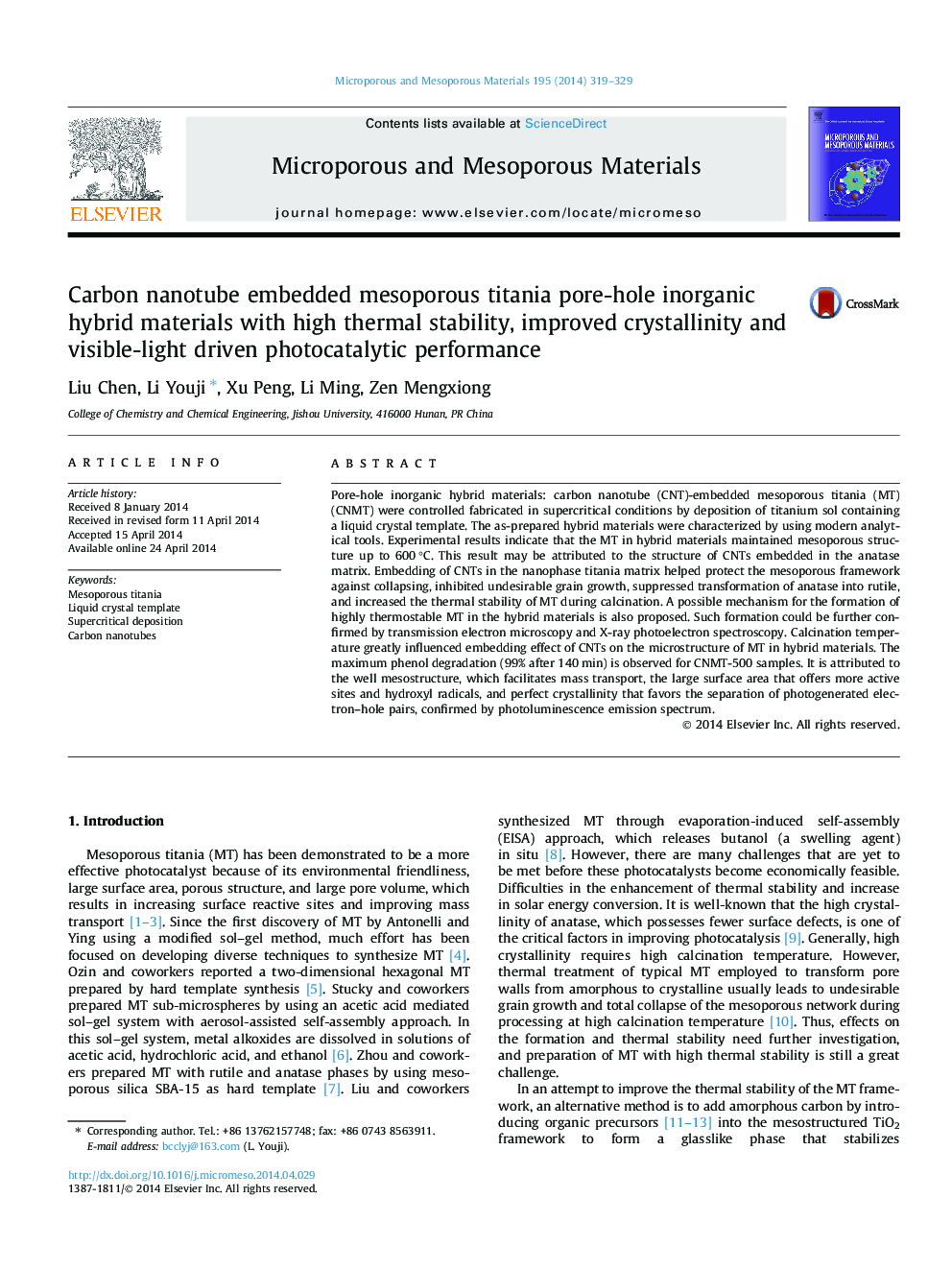| کد مقاله | کد نشریه | سال انتشار | مقاله انگلیسی | نسخه تمام متن |
|---|---|---|---|---|
| 73126 | 49044 | 2014 | 11 صفحه PDF | دانلود رایگان |
• Embedding of CNTs in the mesoporous titania (MT) showed high photoactivity.
• Embedding of CNTs in the nanophase titania protected the mesoporous framework.
• Embedding of CNTs in the nanophase titania inhibited undesirable grain growth.
• Embedding of CNTs in the nanophase titania suppressed phase transformation.
• Embedding of CNTs in the nanophase titania increased the thermal stability of MT.
Pore-hole inorganic hybrid materials: carbon nanotube (CNT)-embedded mesoporous titania (MT) (CNMT) were controlled fabricated in supercritical conditions by deposition of titanium sol containing a liquid crystal template. The as-prepared hybrid materials were characterized by using modern analytical tools. Experimental results indicate that the MT in hybrid materials maintained mesoporous structure up to 600 °C. This result may be attributed to the structure of CNTs embedded in the anatase matrix. Embedding of CNTs in the nanophase titania matrix helped protect the mesoporous framework against collapsing, inhibited undesirable grain growth, suppressed transformation of anatase into rutile, and increased the thermal stability of MT during calcination. A possible mechanism for the formation of highly thermostable MT in the hybrid materials is also proposed. Such formation could be further confirmed by transmission electron microscopy and X-ray photoelectron spectroscopy. Calcination temperature greatly influenced embedding effect of CNTs on the microstructure of MT in hybrid materials. The maximum phenol degradation (99% after 140 min) is observed for CNMT-500 samples. It is attributed to the well mesostructure, which facilitates mass transport, the large surface area that offers more active sites and hydroxyl radicals, and perfect crystallinity that favors the separation of photogenerated electron–hole pairs, confirmed by photoluminescence emission spectrum.
Figure optionsDownload as PowerPoint slide
Journal: Microporous and Mesoporous Materials - Volume 195, 1 September 2014, Pages 319–329
